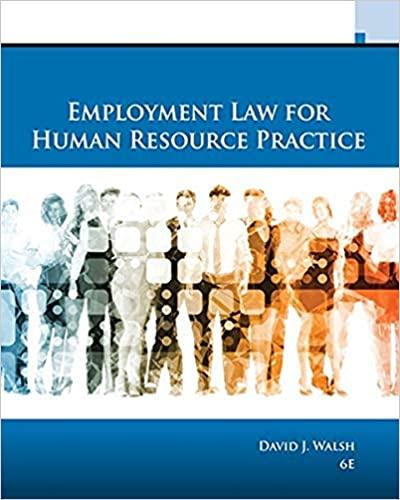From 1990 to 1992, the State Department had in place a hiring plan aimed to increase racial
Question:
From 1990 to 1992, the State Department had in place a hiring plan aimed to increase racial diversity among the officer corps in the U.S. Foreign Service. Plaintiff William Shea, a white Foreign Service Officer, brought suit alleging that the hiring plan violated Title VII. Although he challenges a plan that ceased to exist over twenty years ago, he joined the Foreign Service during the two years the plan was in effect. He alleges that, because of the plan, he entered the Foreign Service at a lower level than would have been the case had he been a minority applicant. The district court granted summary judgment in favor of the State Department, and the appeals court affirmed.
1. What is the legal issue in this case? What did the appeals court decide?
2. The court in this decision reviews two important Supreme Court cases (Weber, Johnson) on affirmative action under Title VII. What did these two Supreme Court decisions say about when affirmative action would be lawful?
3. What was the evidence that there were “manifest imbalances” in traditionally segregated job categories within the Foreign Service?
4. What was the evidence that the State Department’s affirmative action plan did not “unnecessarily trammel” the rights of white employees?
5. Which measures had the Foreign Service taken prior to turning to its race-conscious affirmative action plan? Should it have stuck with these measures? Why or why not?
Step by Step Answer:






